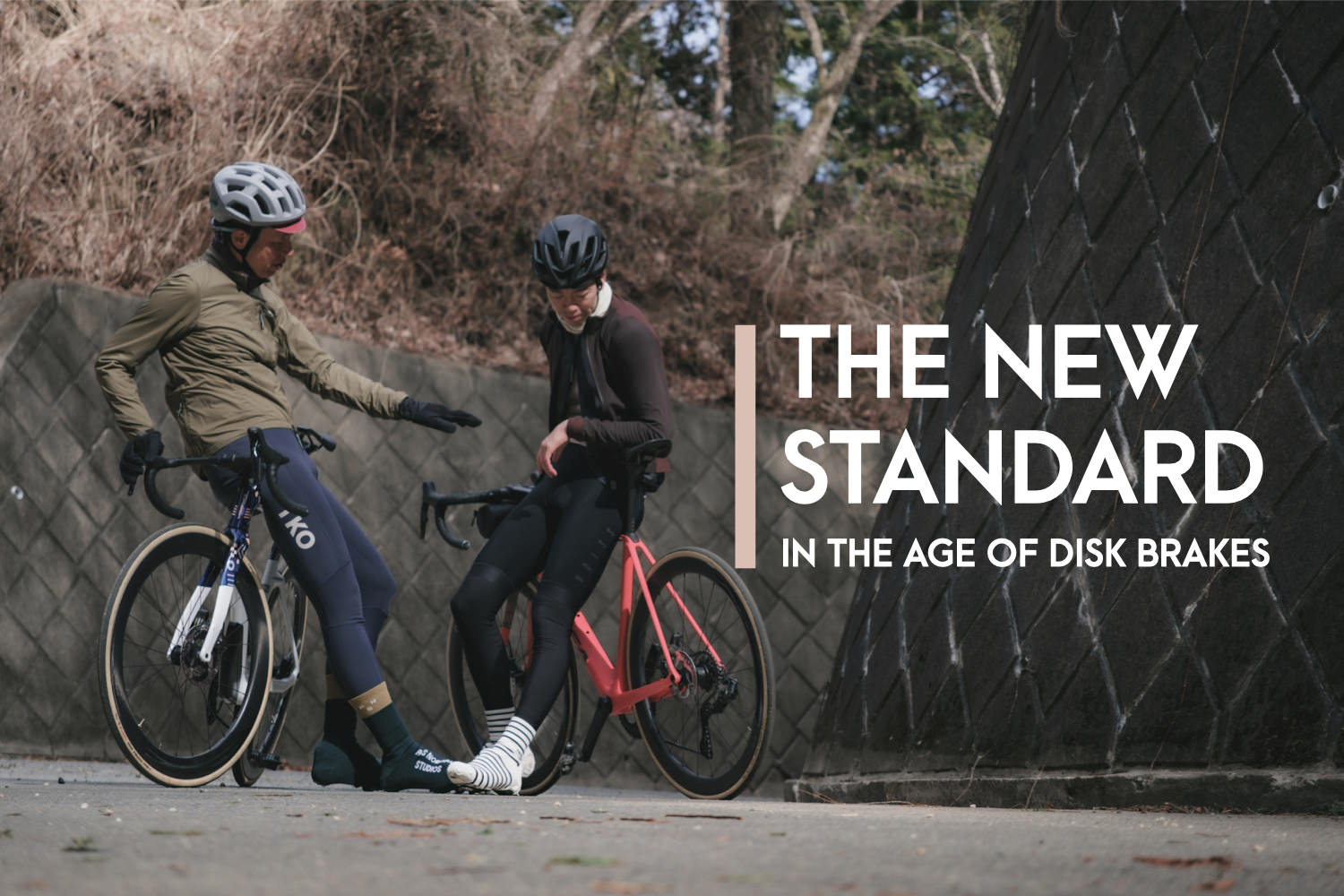
It has been several years since road bikes transitioned to disc brakes, and the evolution of gears adapted to disc brakes now is remarkable. Performance, which was a challenge at the beginning of the transition, has stabilized, and with the rise of fields such as endurance and gravel road, gear selection has fundamentally changed from the rim brake era up until the 2010s.
How should we cyclists choose our gears in such a situation? Together with bicycle journalist Tsukasa, we discuss the thinking of the current era.
Speakers
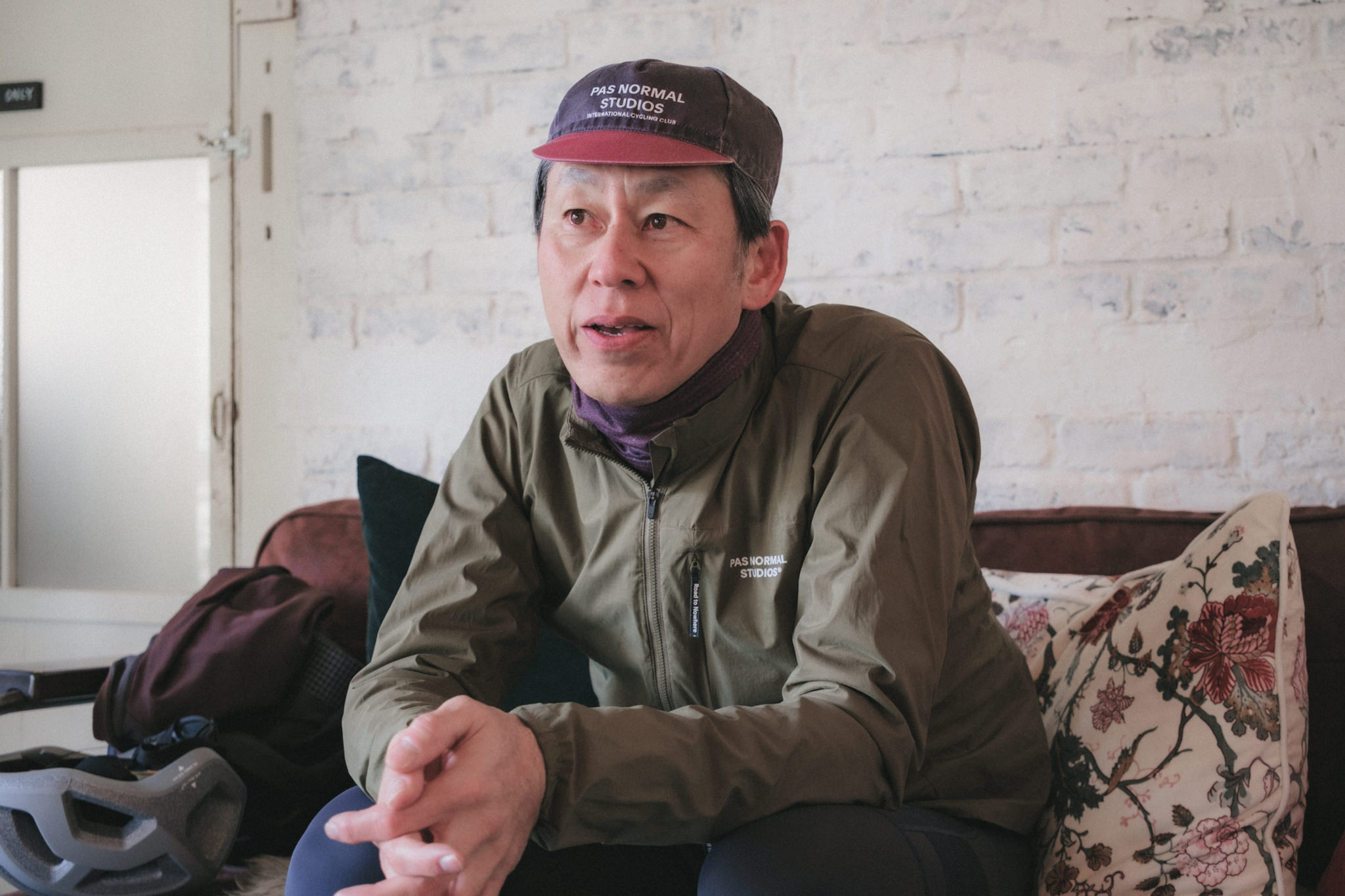 |
 |
| Tsukasa Tsukasa(@kop_2014) Tsukasa Tsukasa is the former editor-in-chief of Cycle Sports, a Japanese monthly bicycle magazine. He is currently involved in various activities centered on bicycles. He has over 35 years of experience with sports bikes and likes to choose not only road bikes but all types of bicycles, and has extensive knowledge of all genres from gear to clothing. |
Tats Shimizu(@tats_lovecyclist) Chief editor of Love Cyclist. He has 10 years of experience with sport bikes. He likes to discuss the sport bike industry, especially road bikes, from a marketing perspective. At the same time, he has extensive friendships with overseas apparel brands and proposes various styles through this media. |
Photo & Edit / Tats
Contents
Why did road bikes get disc brakes?
“I don’t need disc brakes.”

Tats: To begin with, why did road bikes have to be converted to disc brakes?
Tsukasa: The base of the movement is the ISO (International Organization for Standardization). In stipulating safety and performance requirements for bicycles, there was a push to shorten the braking distance and increase safety so that everyone can handle bicycles.
In order to achieve the braking distance stipulated by ISO, there was a problem with rim brakes, where the braking force would change depending on the environment. Instead, the most efficient way was to convert to disc brakes.
Tats: The oft-repeated story that disc conversion was pushed in order to stimulate replacement demand is not true.
Tsukasa: As it turns out, that is true, but the starting point is a bit different. Other people say that “the racing scene has demanded it,” but that is also false, because it is well known that when the UCI was testing the disc brake system, Czech rider Zdenek Štybar (Quick Step) said, “I don’t need disc brakes.” As he said, rim brakes are certainly easier to use in the racing realm.
Tats: What does that mean?
Tsukasa: In road racing, they use the brakes not to stop, but to adjust speed. The group is a close race, riding back and forth, stretching and shrinking, so when they are in the middle of the pack, they need fine speed control with the brakes.
At that time, the large circumference of rims is easier to control than the smaller rotors of disc brakes. In fact, I feel that speed control is easier with rims.
Tats: Nevertheless, the market’s main battleground is no longer racing.
Tsukasa: Yes, we are. So now we have to think mainly in terms of disc brakes. Rim brakes are becoming less and less cost-effective, including maintenance, so we have no choice.
The Phenomenon of Technology Pileups
Tats: What do you mean when you say, “the most efficient way was to convert to disc brakes.”
Tsukasa: The final braking power of the bicycle is held by the grip of the tires. For the same braking system, the thicker the tire, the higher the braking power. Even in the rim era, the standard changed from 23c to 25c, but as the width of the tire became wider to conform to ISO, it could no longer fit in the calipers of rim brakes, so the choice of disc brakes instead became inevitable.
Also, since MTBs had long been converting to disc brakes in the market, it was sometimes a good idea for road bikes to follow suit.
Tats: The use of disc brakes was essential to increase the width of the tires, which control braking power.
Tsukasa: The “disc brake” and “wider tires” should be discussed as a set.
The wider tire widths are also driving the shift to tubeless tires. Tubeless tires are more comfortable to ride on and lighter to drive because there is no energy loss caused by the misalignment between the inner tube and the tire that occurs between them. The fatter the tire, the lower the air pressure is operated, which causes more internal resistance, making the ride heavier and less comfortable.
Tats: So tubeless has become the better choice for wider tires. Even at lower pressures, there is less concern about punctures, and the riding comfort are different. There are some operational concerns such as puncture repair and bead raising, but they are now used in races and have become a more common choice these days.

Tsukasa: In addition, the wider widths have led to the evolution of derivatives such as gravel road and cyclo-cross. Until now, these categories used cantilever brakes, but that would change the frame platform and would not be compatible with all weather conditions.
The idea was, “Now that there are no restrictions on tires, we can make a lot of different types of bikes,” and so frames with larger tires were built one after another based on road bikes.
In the past few years, the antithesis of competitive bikes has also become stronger, and a gravel scene has gradually emerged.
Tats: As road bikes have become disc-braked, the technology is being innovated with wider tires, tubeless tires, and gravel derivatives.
Tsukasa: There is a phenomenon of technology piling up. This has happened several times in the evolution of bicycles in the past, but when one technology evolves, such a cobbling-together is likely to occur. It is an interesting situation now, where the number of options is actually increasing due to the discization of technology.
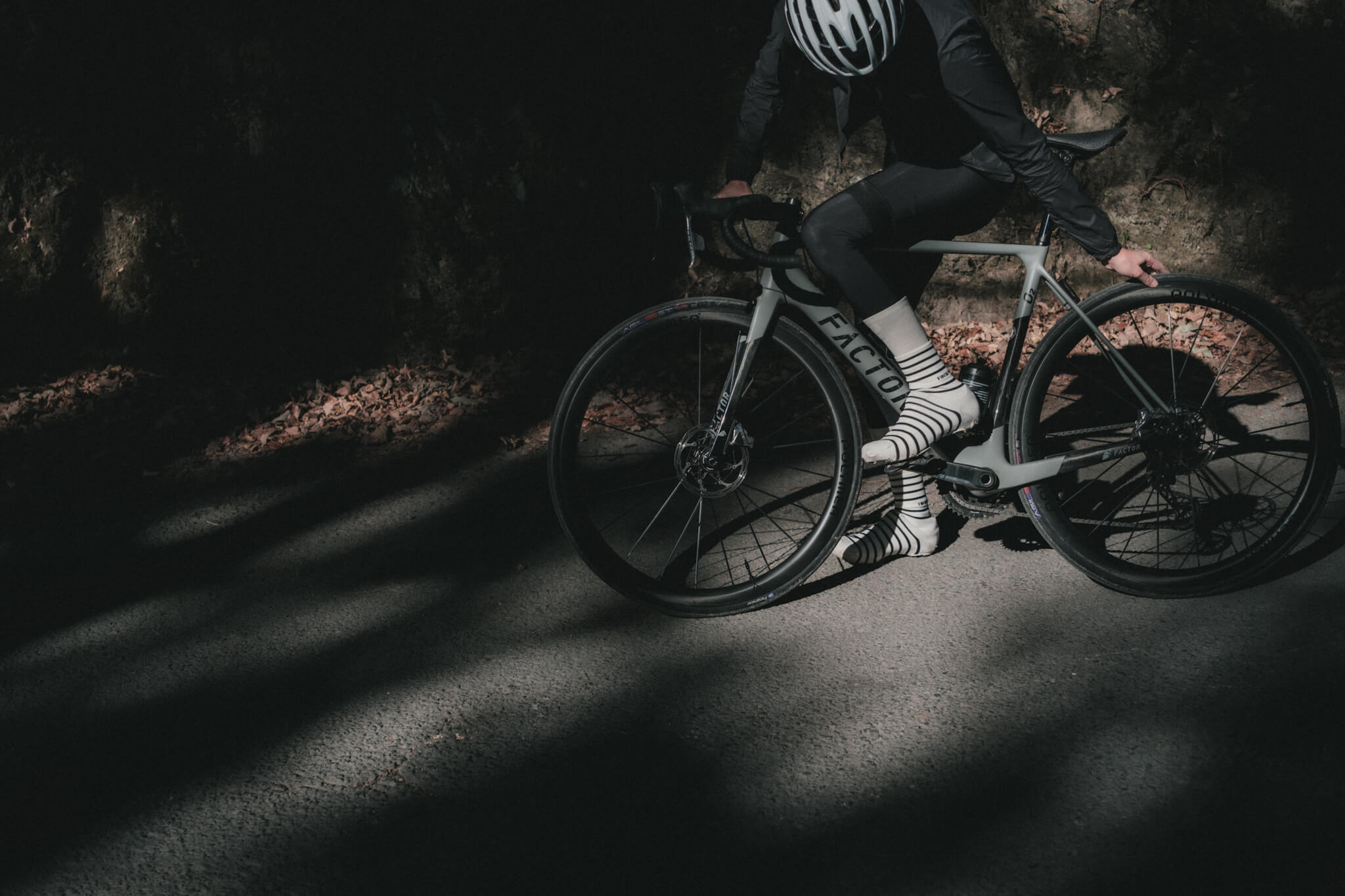
Disc brakes that caused a technology pile-up
Value of Endurance Road
What are the criteria for selecting gear?
Tsukasa: In the 25c era of the past, it was sufficient to talk about road bikes within the framework of “racing bikes. Now, however, with the advent of options such as 35c and 38c tire widths, it is good to talk about racing bikes as a way of doing things, but it is also necessary to have a value system that allows us to choose from other frameworks.
Tats: It has added depth to the gear selection process. This is a good trend.
In the past, the antithesis of racing was to say, “You can ride a road bike slowly,” but I felt a little uncomfortable with this expression. Sometimes it is fine, but if you do it every time, you will naturally feel like “why am I riding a competition road?
The increased tire width has made the optimal speed range for different bicycles much more flexible. I think we can now choose where our comfortable speed range is and what is the right bike for that range. Until now, because racing was the standard, the word “slow” was used to imply the opposite, but now that the speed range can be flexibly changed by including gears, that expression no longer fits the times.
Tsukasa: If we were to choose gear now, we would start with tire width based on “what we enjoy doing.”
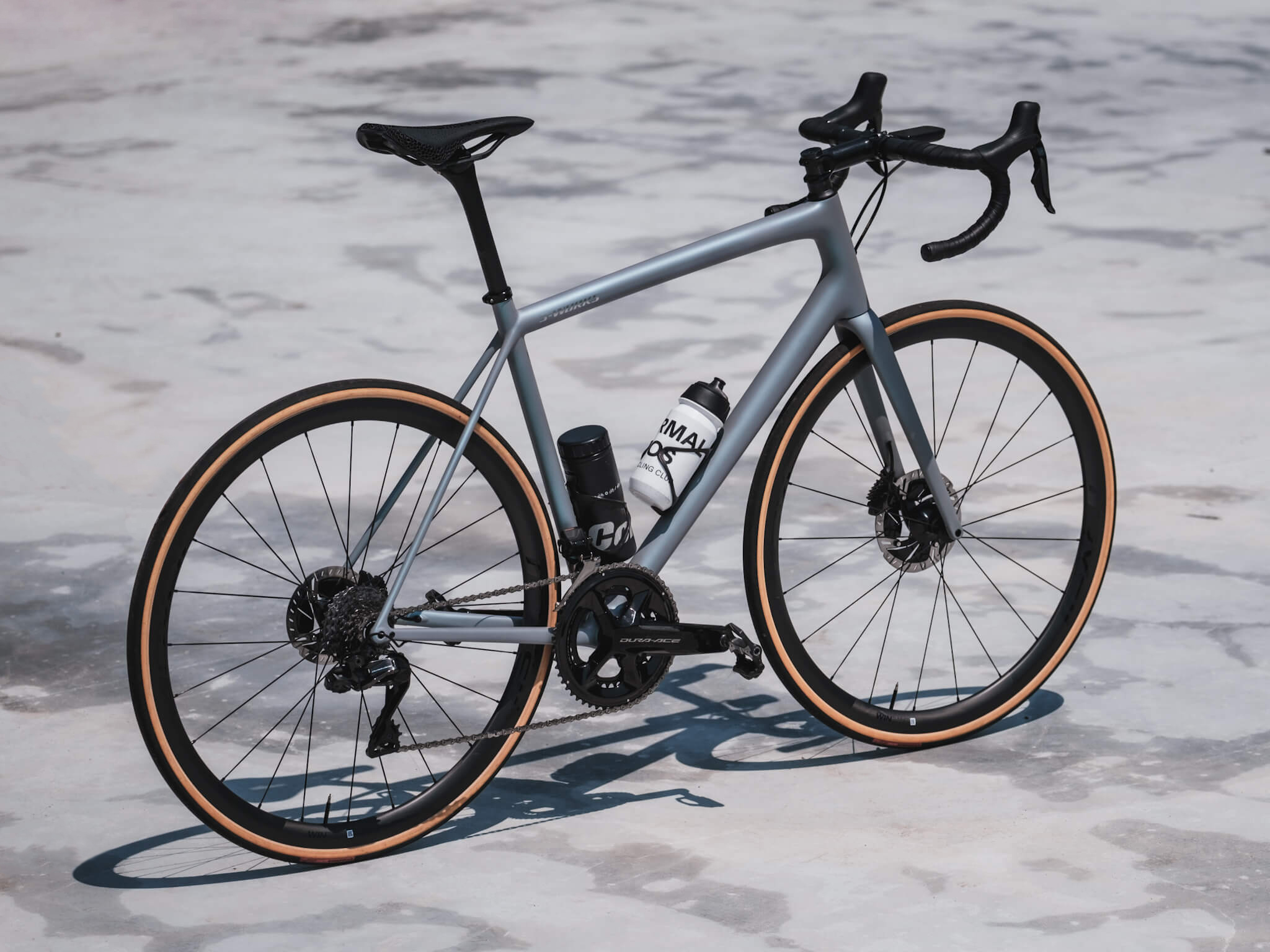
Tats: Tsukasa, you are currently riding S-Works Aethos and Cervélo Aspero. What is your next gear?
Tsukasa: I like Aethos, it’s a nice bike, but I’m thinking of going endurance road next.
Tats: Oh, why are you interested in Endurance Road?
Tsukasa: Prior to Aethos, I had only bought competitive road bikes and my play style was limited to competition-oriented. I have ridden many different endurance roads for review, and there were some models that I thought were nice bikes, but I never got around to buying one. Endurance is, for lack of a better word, “a bike that doesn’t excel in any way.” It doesn’t have a sense of acceleration or lightness. So when I was young, it was not on my radar.
Tats: From there your thinking changed as you got older.
Tsukasa: On the contrary, it is now in view. It doesn’t excel anywhere, but overall technological advances have made individual performance, including acceleration, better than before, and it has settled into a good place. It fits my lifestyle better now.
In car terms, I think of the Endurance Road as a “Touring Wagon” – a nice adult vehicle from the days when Audi, Mercedes, BMW, or VOLVO 740s and 850s were all the rage.
Tats: I see..! That is the part that is different from gravel roads.
Tsukasa: Gravel roads are RVs. In layman’s terms, it is a Land Cruiser-like vehicle.
Tats: Easy to understand (laughs).
Tsukasa: What I like about touring wagons is the wide range of dress codes.
You can wear sportswear to the golf course or a suit to a five-star hotel. It’s a car that really brings out the “adult” in you.
Endurance road vehicles nowadays, which can accommodate up to 38c, are just as spacious.
Both touring wagons and endurance roads look great when ridden by adults who maintain their physical shape and look sharp.
Tats: I like the new image. I may be offended if I say this, but I had a strong image of endurance roads in the racing era as being ridden by sloppy adults.
Tsukasa: Ah, it is the image created by Roubaix and others in the early days.
Tats: Rather, the positioning of “endurance road as a balanced bike for nice adults” fits perfectly with the image that the latest endurance models have.
There aren’t many styles of cyclists who have been road biking for many years that I would want to use as role models nowadays. Perhaps it is because they have gone through the era of race bikes, or perhaps their attitude toward bicycles is fundamentally different. On the contrary, from your story, I can see the future for facing bicycles moderately and stylishly in one’s lifestyle.
Tsukasa: The older we get, the more we need to successfully depart from the selection criteria of our youth. For example, the same goes for clothing. For example, Pas Normal Studios will start wearing natural Essential instead of racy Mechanism. From now on, people who started riding road bikes during the road bike boom of the 2010s will be getting older, so I think it would be good if they could make choices that match their lifestyles.
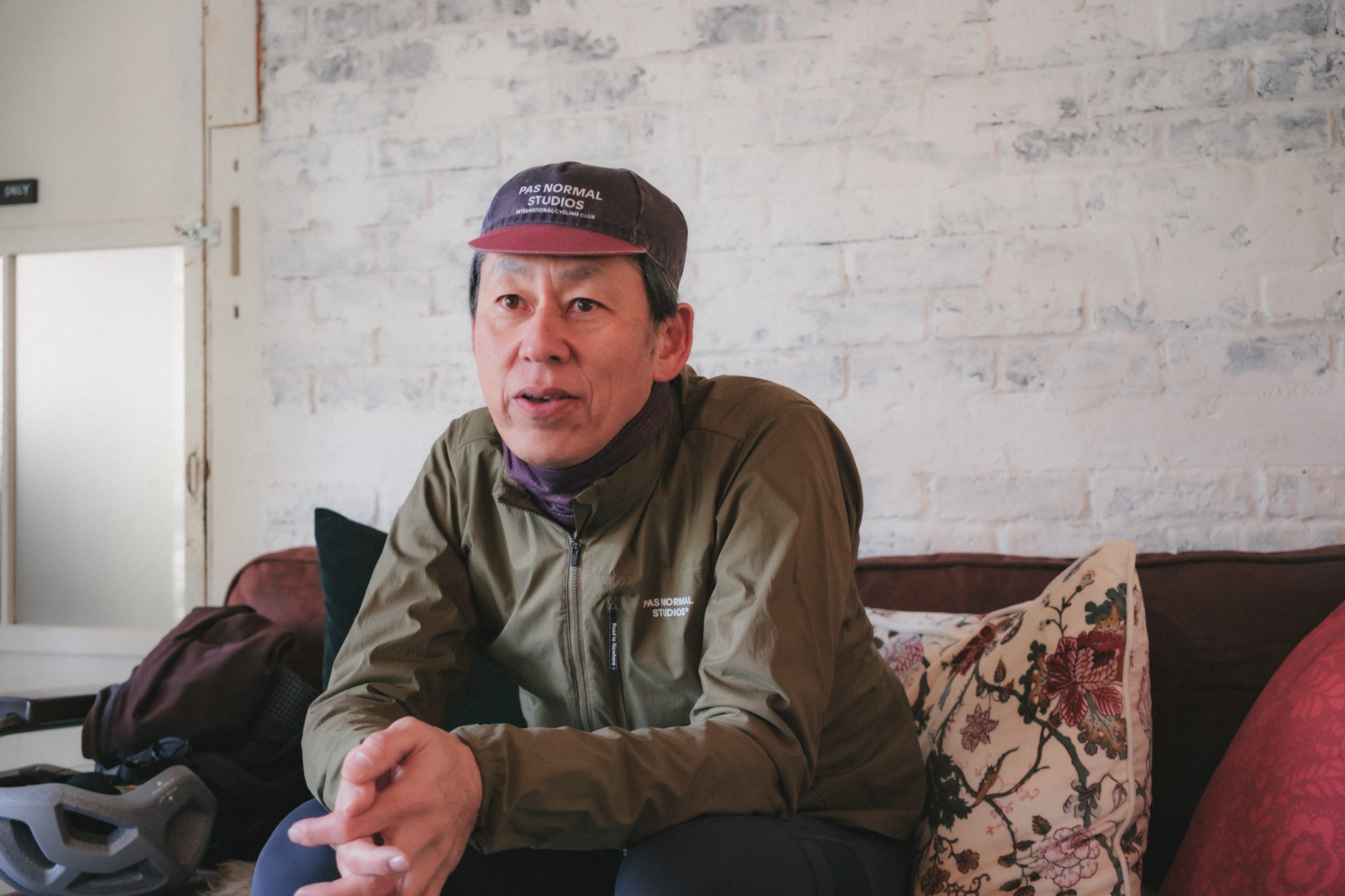
Roubaix, Synapse, and Defy
Tats: I know you ride a lot of the latest endurance roads for media review, but which models are you interested in?
Tsukasa: I especially liked Specialized’s Roubaix SL8, Cannondale’s Synapse Carbon, and Giant’s Defy. They are all very good bikes.
The new Roubaix, which came out last year, has 38c tire clearance, so it can handle most gravel, and Specialized says that “the Roubaix is great for routes where 10 to 15% of the ride is gravel, We think this is true for the Roubaix people, but it’s also true for cyclists who enjoy riding gravel now.
Tats: That’s exactly the right percentage. In the first place, there are not many gravel roads in Japan that go on for kilometers, so the gravel component is about 10% when riding while connecting unpaved roads.

← Roubaix SL8 | Synapse Carbon →
Tats: I also reviewed the Synapse and got the impression that it is a bike that offers a good balance of all aspects of road riding at a high level.
Tsukasa: Yes, Synapse is good. That’s why I didn’t want to add anything extra about Synapse.
Tats: Smart Sense is a future-oriented system, but it is incomplete. This is a great loss as it currently limits targets.
Tsukasa: It is very Cannondale-like, but from the user’s point of view, I would like to see an option with/without Smart Sense.
Giant’s Defy is also very complete. It has a smart shape that doesn’t make you think it is an endurance road. It is light and comfortable to ride without any gimmicks like Roubaix, but it is very good and feels great. Riding the Defy made me realize once again that Giant’s technical capabilities are amazing.
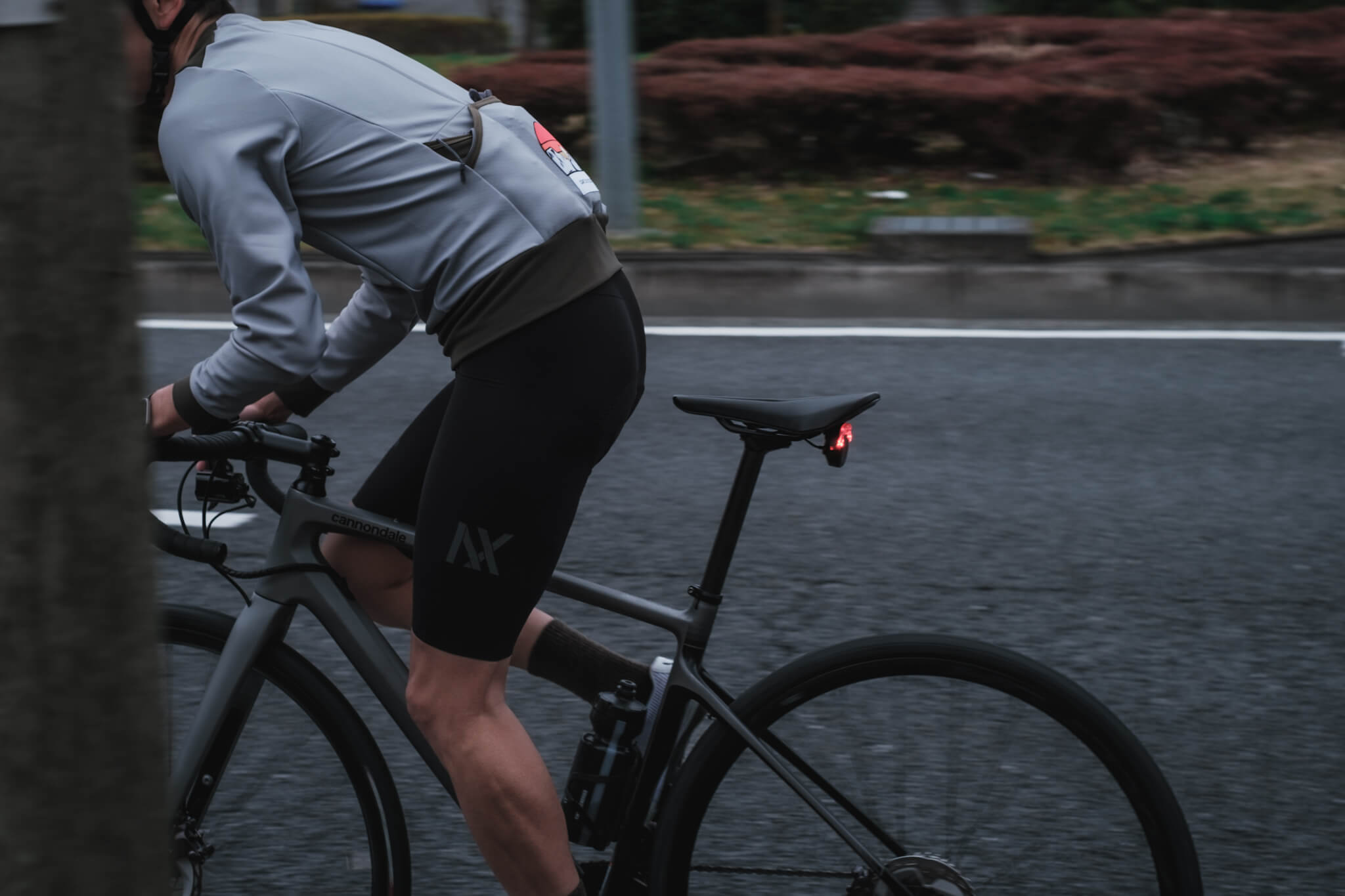
Synapse is being questioned by Smart Sense, though the bike is extremely good to ride.
The idea of “grade-free”

Tats: I myself still want to enjoy road cycling that is a little more competition oriented. However, I have come to feel that it is a bit constricting to own only high-end carbon bikes, as the range of bicycles is becoming wider and wider. Currently, both my road and gravel bikes are carbon, so there is some overlap in their roles.
Tsukasa: The feeling of being pushed to “go fast” on a high-end bike is sometimes constricting. In terms of choosing a bike, I think the industry needs to do something about the vertical value system that says, “If you ride a Tarmac SL7, the next one will be an SL8. In order to expand the market of bicycles, we need to have a thick middle class target.
Carbon is not the only material. What are we riding bicycles for? We ride bicycles to be happy. It is natural to think that high-end carbon is not the only material that will make you happy if you ride bicycles for a long time.
Tats: Price is not everything, but with carbon, the cosmetic value of the amount of happiness you get is relatively worse due to the rising prices. I plan to switch my road from FACTOR O2 this year, and the frame I am ordering now is made of a non-carbon material.
Tsukasa: That is something to look forward to. The more experience you gain, the more you will be able to tell the difference between materials, and I hope you will enjoy the new materials.
What is good about being able to choose a bicycle in such a way that is not influenced by grade is that you are not being talked down by others. I think grade-free values will become more prevalent in the future.
Tats: If we can do that, we can stay away from getting too involved in the values of the current industry. I would like to take a step back and live a happy bicycle life (laughs).

Recent Wheel Situation
Where are the players in the rim brake era?
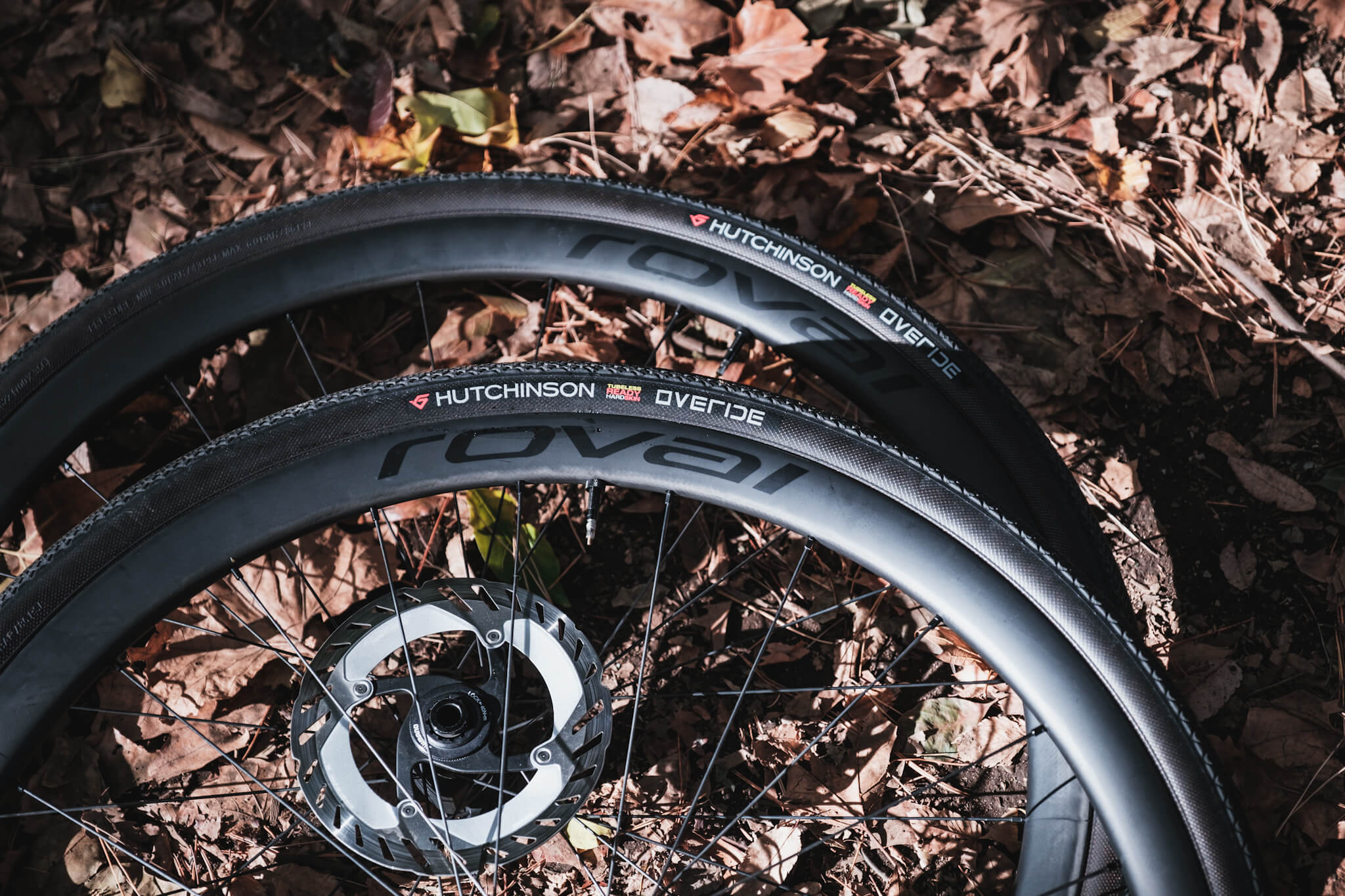
Tats: So far we have talked about frames, but let me also talk about wheels and components. The power structure in this field has changed considerably in the past few years. The old standard of “Components should start with 105 and wheels should be ZONDA” has easily collapsed, and I think it has become quite difficult to grasp the current situation.
Especially for wheels, complete bike brands such as Roval and Cadex have started to develop their own brands, and the number of cases of choosing wheels from wheel brands has been decreasing.
Tsukasa: The relationship between wheels and frames is stronger than in the rim brake era, isn’t it? It used to be the norm for high-end models to be complete in pieces, but nowadays, frames are rarely sold individually and are chosen as a total package. The overall performance is guaranteed there, so choosing third-party wheels has become an adventure in reverse.
Tats: So Fulcrum, Campagnolo and Mavic have all faded away at once.
Tsukasa: Mavic, in particular, has lost market share, both in finished models and in the aftermarket. They are a good brand, though.
But there are some brands that are doing well, for example, ZIPP has been doing better lately and seems to be increasing sales. The new 303 has just the right reputation and price.
Campagnolo also has a very good wheel, the Hyperon Ultra. It rides and stands up with class. Of course, it is worthwhile for performance-oriented cyclists to ride it, but it is the best wheel for an old guy like me who has experienced many different products. Campagnolo has a high-class feel when you see them in person, so I hope they regain their strength once again.
You need tubeless to get the best performance.
Tats: Looking at it this way, there is a lot of chaos around wheels. There is no standard “this” wheel, and if you only want performance, it might be Roval, or if you want to cut costs, it might be a Chinese brand. The price is quite high, so it is difficult to find the right solution by yourself.
Tsukasa: The “right” answer is not simply good acceleration or light weight, but rather whether or not the bike is in line with the philosophy of what I consider to be a good bike.
Good performance is one criterion, but performance is something that cannot be completely quantified, depending on the situation in which it is used, the rider’s fatigue level, and the mental aspect of the rider.
Tats: As they say in behavioral economics, people can’t make logical decisions.
Tsukasa: Yes, we are creatures that are always driven by our emotions, so I hope that you also value the criteria of how much emotional feeling you get from seeing, touching, and riding the product, and how much it makes you feel uplifted.
Tats: Also, would there be wheel and tire compatibility?
Tsukasa: Today’s wheels are designed based on tubeless tires. When I rode Reserve wheels with tubed the other day, I didn’t notice any outstanding performance, but when I switched to tubeless, they instantly became very good.
I would put in a tube if I wanted to recover from a puncture, and with the introduction of TPU tubes, I thought tubed would be sufficient, but with the latest tubeless-compatible models, I definitely should try tubeless to get the performance that the wheels are capable of.
Tats: And tubeless tires are evolving.
Tsukasa: Especially with the recent tires, I felt that the Vittoria CORSA PRO was a little different from the tires I have been riding with. Once I feel that performance, I would like to ride tubeless with the CORSA PRO.

Vittoria CORSA PRO
Current status of SRAM vs. Shimano
Position of 105Di2
Tats: Finally, let’s talk about components. I miss the days when Shimano, SRAM, and Campagnolo were considered the three major components, and now the two mainstays are Shimano or SRAM.
First of all, regarding Shimano, what we are concerned about is the position of 105Di2. The market price for a complete 105Di2 is about $1,900 USD, and the price difference with Ultegra is only about $600, which is probably why Shimano has a large inventory of 105Di2 bicycles.
Tsukasa: This is another downside of the old vertical value system.
There was a time when the growth of a cyclist was considered to be going up from 105 to Ultegra to Dura-Ace, and the image of 105 as an entry-level bike has not yet been dispelled from the market.
Tats: At a time when the market is stagnant, it is difficult for existing users to find a reason to buy it, especially since it is just Di2-ized and priced up without any rebranding. The fact that there are also inexpensive mechanicals (about $900) makes it even more so.
Tsukasa: But if I were asked to choose between 105 and Ultegra, I would choose 105.
I don’t like the shape of Ultegra’s cranks, they are too flimsy, and I think 105 cranks are more edgy and better looking.
Tats: You have been using Dura-Ace for a long time.
Tsukasa: Yes, I got into bicycling from racing, so I’ve been using Dura-Ace since the second generation. I also bought the current 9200 and I think it may be the last Dura-Ace for me.
The performance of Ultegra has improved so much, and Ultegra stands as the pinnacle for the average cyclist in terms of features alone, but the price of Dura-Ace has gone up so much that if there is nothing in the next generation that moves me at this point, I will have no reason to choose Dura-Ace.

Shimano to get stuck
Tsukasa: I have been using Shimano for a long time and want them to do well, but looking at the recent situation, I sometimes feel that they are in a state of stagnation once they get to the top, which is a bit common among Japanese manufacturers.
Tats: It shows in the product.
Tsukasa: Shimano did not move to a single front in MTB and thus fell behind SRAM.
Why is this? Shimano has a very good transmission performance. Especially the front is outstanding compared to other companies.
Because SRAM had a bad front, they came up with the idea of “just eliminating the front derailleur,” which was linked to the market and was accepted.
Shimano was confident in its front shifting, so they went on the offensive, but compared to a front single, it was more complicated to operate and caused more chain trouble, so users left. We are in a state of rigidity in our decision to give up and go to the next step because our technology is so great that we can’t abandon it. I am a little concerned.
And they could do this with e-bikes, which will certainly be electronically controlled in the future, so they won’t need external transmissions. If Shimano continues to insist on external gearboxes on e-bikes, then….
Tats: The only thing left is road bikes.
Tsukasa: What will be the next SRAM move?
Tats: I feel that SRAM’s manufacturing is more user-oriented. Assembly is easy, controls are streamlined, and front/rear common batteries and apps are easy to use. Each product design, RED, FORCE, and RIVAL, is unique. And SRAM is giving users more options for the future, such as front single and UHD hangers.
Tsukasa: If we look at shifting performance, durability, and product precision, it’s Shimano, but SRAM is also used by professionals, so it’s fine for us to use. However, I think SRAM should be brushed up a little more in terms of comfort of use. Shimano is still superior in terms of the feel of the disc brake lever touch, controllability, and other qualities.
Tats: I feel so much better when I compare them. The comfort makes me think that Shimano is indeed the best.
I think your choice will depend on which company’s stance you share, which product you prefer, and which you see as the future.
I have SRAM on my road bikes and Shimano on my gravel bikes, but because of the difference in shifting methods and the hassle of operation, I think it is time for me to narrow my choice down to one or the other.
Tsukasa: Also, in the future, I would like to see the release of components that are not part of the hierarchy with Dura-Ace at the top, and that are not part of the racing lineage. As the demand for racing bicycles shrinks, I would like to see the creation of a high-end line that focuses on pure bicycle fun.
Tats: Wouldn’t that be Campagnolo now?
Tsukasa: Hmmm, it’s tough on the performance side…. There may be romance in Campy, but some parts are no longer lagging behind in basic performance, so I personally think they are not on the same playing field as Shimano and SRAM.
Twenty years ago, Shimano had a second grade after Dura-Ace called “Sante”. This was not a pure race component, but an upper-middle grade designed for more casual road riding, which was different at the time. So maybe something like Sante will resurface with the times, or maybe GRX will take on such a role instead.
Tats: GRX’s position is unclear at the moment, but it would be interesting to see such a rebranding direction.
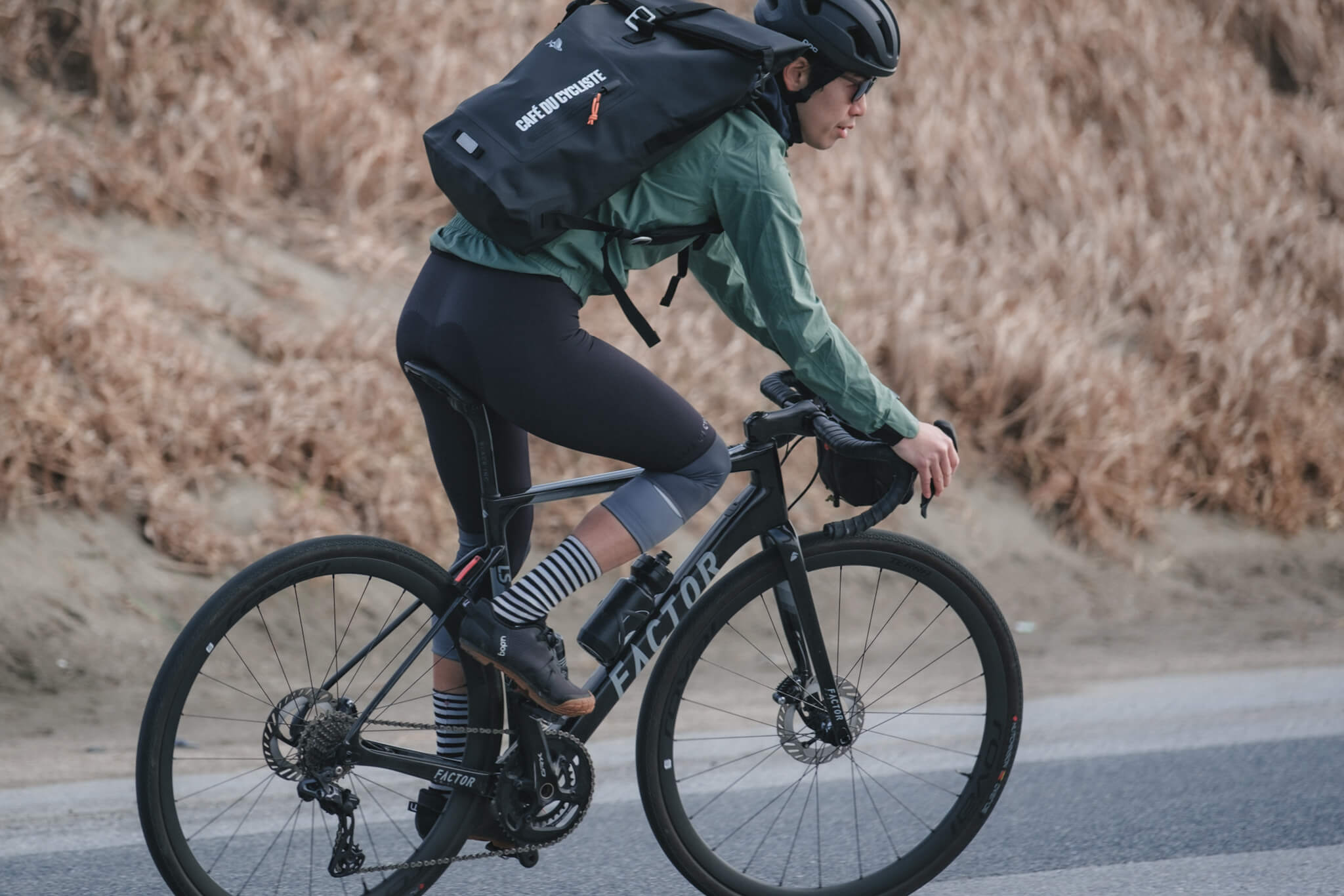
GRX is still outside the hierarchy.
The introduction of disc brakes and the accompanying evolution of gears has brought about significant changes in gear selection. While endurance roads have been given value as “good adult rides” and gravel roads offer new adventures, there is also a path to rediscovering the joys of racing bikes.
Just because we live in an age where all options are diversifying and you have to have your own axis in mind, users are being asked to choose gear that is unique to them, looking at their relationship with their bicycles. The realization of this will lead to the creation of a wonderful world of bicycling, where “good adults” can lead cool lifestyles.
Photo & Edit / Tats















